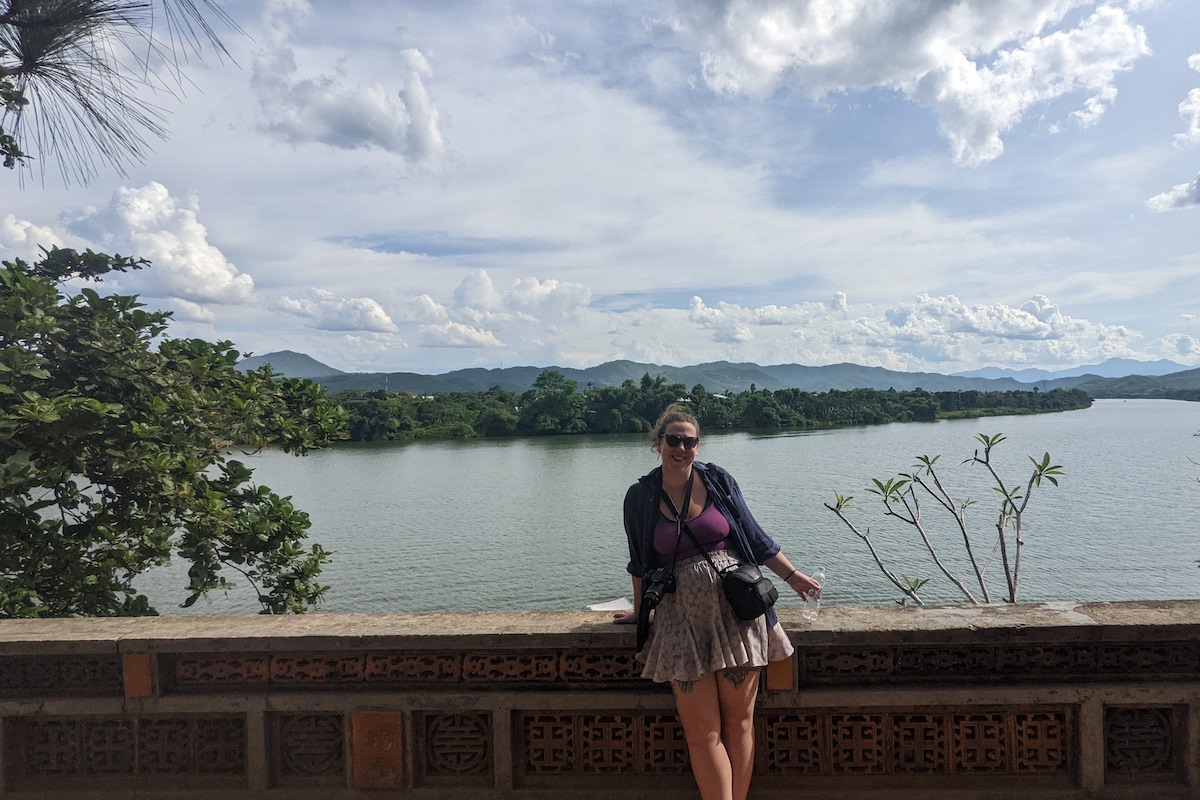
I Gave Up Everything to Become a Chronically Ill Digital Nomad
Skip to Section
Five months ago, like millions before me, I boarded a one-way flight to South East Asia and started an adventure of a lifetime.
However, unlike the travel influencers applying a layer of gloss to the lifestyle, I am taking a few pests along for the ride—a cohort of disabling chronic illnesses.
I live with a shopping list of comorbidities. The headliners are a nerve pain condition called fibromyalgia; an autoimmune disease affecting my skin and joints called localized scleroderma; and endometriosis, a gynaecological condition that inflicts widespread pain.
Despite my long-term fascination with the nomadic lifestyle, I kept putting the dream back in its box. I could not fathom travelling full-time while being disabled.
Occasionally, the dream peeked out of its prison but exes and well-meaning friends, who asserted that illness would make a nomadic lifestyle impossible, repeatedly crushed its spirit.
Living with a cohort of disabling chronic illnesses complicated my life beyond belief, so I locked the fantasy away. It was too painful to look at.
For years the dream lived there, never permitted to connect to any sense of hope. Then, the Coronavirus pandemic hit and my perspective shifted drastically.
In 2020, I lost nearly all of my freelance work and as the lockdowns eased, I worked seven-day weeks to make up for lost earnings. It sparked a burnout of epic proportions.
Lost in a fog of exhaustion and frustration, I opened the box and put the dream back on the table. Although I was killing myself at work, my health had never been better after receiving surgery to ease endometriosis’ debilitating symptoms.
So, after donating or storing everything I own, I leaped into the unknown and flew to Bangkok, Thailand in April 2022.
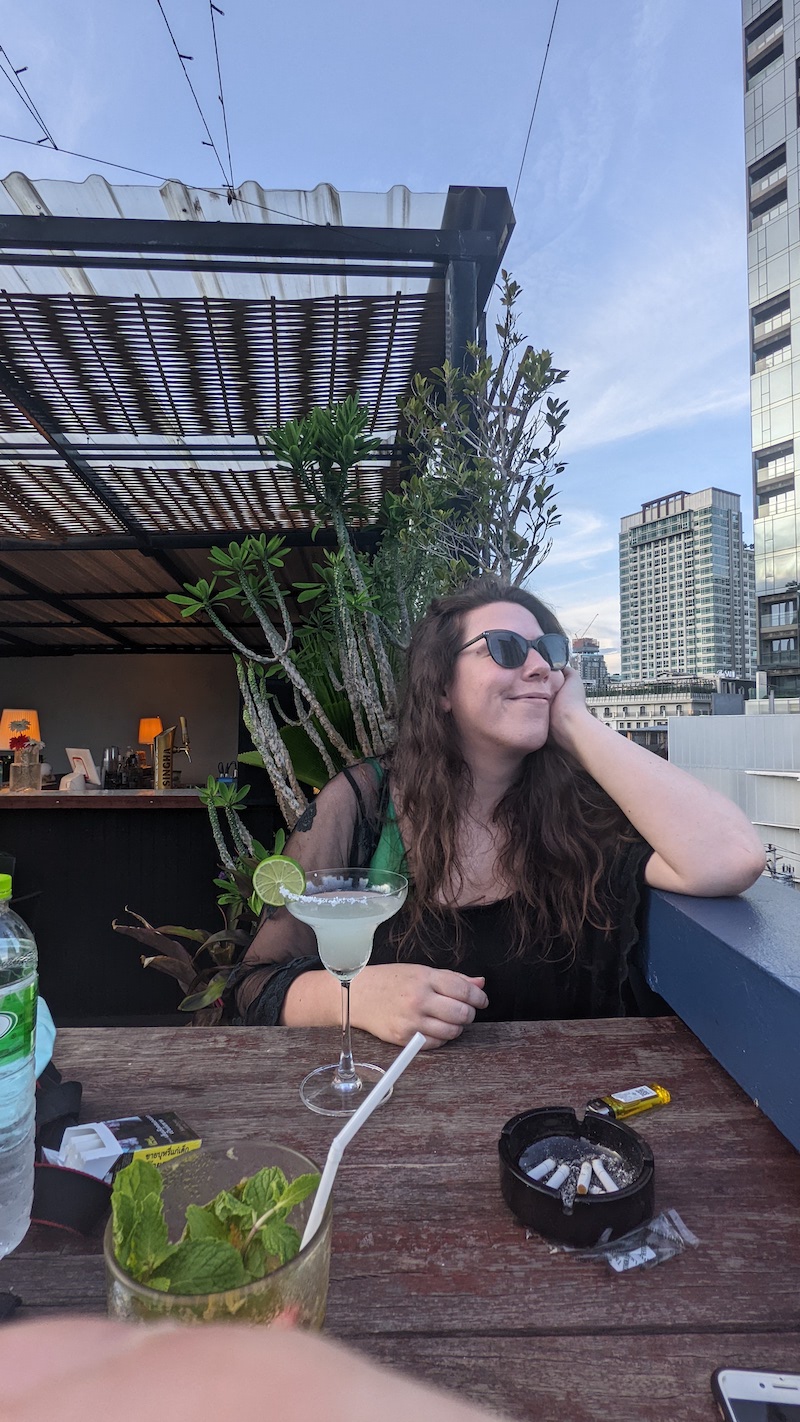
Cocktails in Bangkok
Before taking off, I checked in with various doctors and consultants, getting signed off from as many as possible. I also compiled a mega list of coping mechanisms and management techniques to help cope with chronic pain on the road.
Next, I tackled travel insurance. Securing comprehensive coverage for multiple comorbidities is next to impossible and astronomically expensive, so I travel with general coverage that requires payment for hospital or doctor visits related to pre-existing conditions.
It is a big risk but I refuse to be shackled to the UK because medical insurance companies are fleecing anyone with a condition more serious than the common cold. Equipped with insurance and a guide of the best hospitals in Thailand bookmarked, I took off.
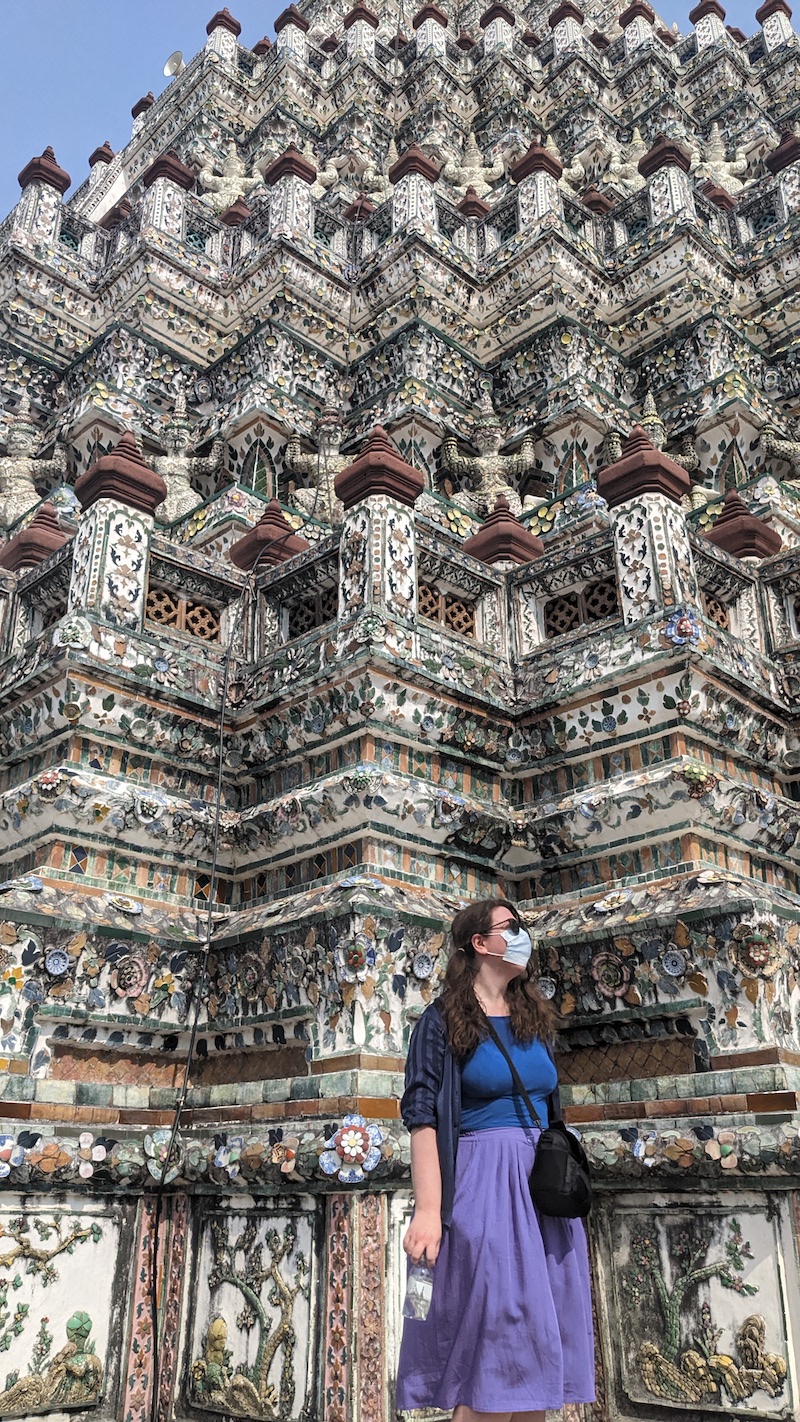
Wat Arun
The first few weeks were a brutal shock to the system. Everything from acclimatising to the hotter climate to managing pain levels when moving every few days felt overwhelming.
Luckily, travelling with my partner allowed both of us to ease into the routine. Their support felt especially precious on bad pain days when mood dips and mobility struggles made going home feel like the only option.
Wrestling with inaccessibility took a front row seat in the beginning. While my mobility has vastly improved since undergoing surgery, there are still days that inflict a toll. Plus, South East Asia is not exactly built for disabled people.
Transport services in the bigger cities are usually accessible, but at tourist attractions and in smaller towns and villages, access is surprisingly not standard practice.
My partner and I adopted a “slow travel” ethos as we explored. We stayed in locations for weeks at a time instead of moving every few days, allowing us to soak up each place gradually without compromising my physical health.
In those first three months, I achieved things that I never thought my body would be capable of doing again. I topped the highest peak on my favourite island in Southern Thailand, Koh Pha Ngan; navigated the winding streets of Bangkok’s wondrous sights; and explored the deep caves of the Marble Mountains in Da Nang, Vietnam.

Hue, Vietnam
However, just as I was settling into the lifestyle, an emotional grenade threw things out of sync. My partner and I split up.
They were my best friend, so moving ahead with this lifestyle without them required grieving a future that can never materialise. Alongside letting go of the relationship, I bid farewell to their support.
While I did not need them to cope, their presence made full-time travel feel more attainable. Resisting the urge to book a one-way flight back home, I powered through the pain and two months later I am still on the road with no plans to stop.
Just a few days after the breakup, I boarded a flight to Cambodia. It was my first solo flight and the first time I visited a country alone. The experience shattered my expectations by introducing me to a world I never thought disability would allow me to enter.
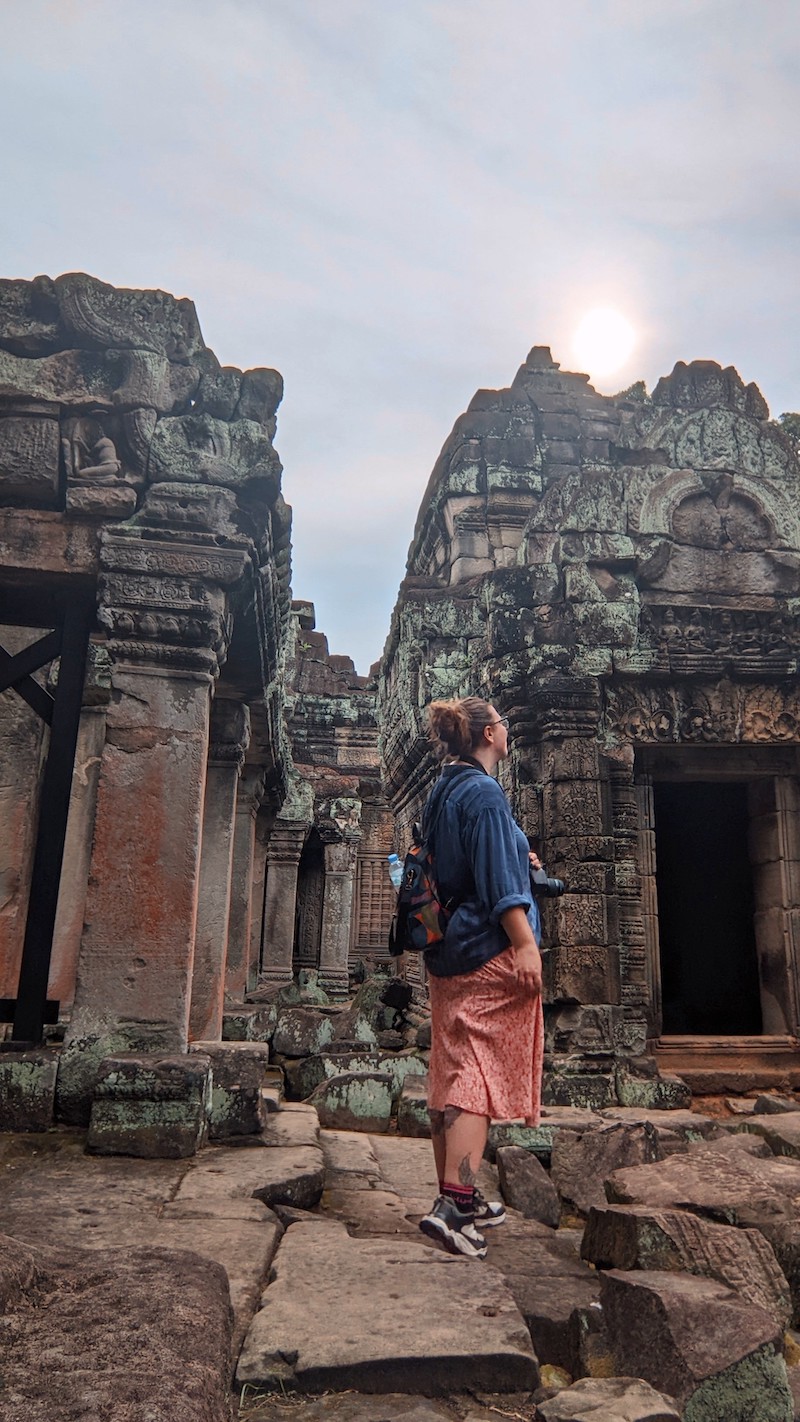
Exploring Angkor Wat solo
I befriended people from all over the globe, stayed in dormitory rooms, visited mind-blowing sights and explored the world for the first time without fear as a companion.
Riding the learning curve has turned this nomadic lifestyle from a fantasy into a reality. I will never endure a 9-to-5 life again. I refuse to stress over council tax bills, pay astronomical rent or secure a mortgage.
There are, of course, greater challenges in managing this lifestyle solo while disabled. I mitigate them by prioritising slow travel. Where some people spend a single night, I stay for three.
When a flare up hits, I move into private rooms to get proper rest. When my body rebels and mobility reduces, I book hotels that offer room service or stay longer in areas that have food delivery apps to ensure I stay fed.
I also research each area before visiting so I know where the most reputable pharmacy and hospital are located in case of emergencies. The hardest part is communicating my illnesses to new people.
I meet dozens of people every other day and figuring out how to share my illnesses without forcing it into conversation is tricky. Generally, I keep the conditions under wraps unless it’s necessary for my own safety. For those I bond with, I divulge my medical history and share how it impacts daily life.
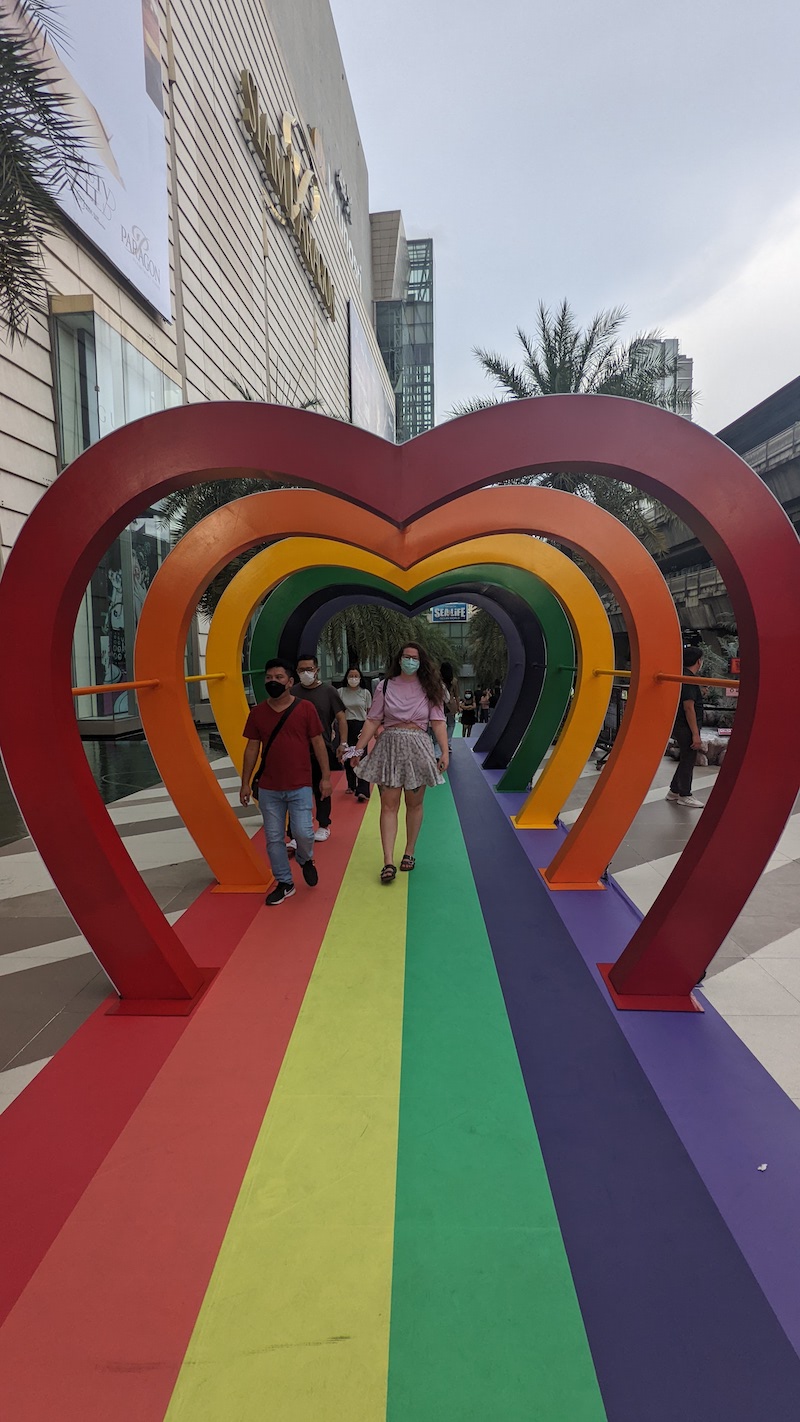
Bangkok Pride
Now entering the sixth month of full-time travel, I have fallen head over heels in love with this lifestyle. There are days when the hardships start to win but then I forge a strong connection with someone new, climb a mountain or ride a moped and feel as free as the wind blowing through my hair.
Navigating the world alongside my illnesses is equally electrifying and terrifying and, if I’m honest, this lifestyle may not always be maintainable. I could need to travel less frequently or settle in one place, however, I know one thing for sure: the fear of being sick in a foreign country will not chain me to the UK.
I am, and will remain, a chronically ill digital nomad.
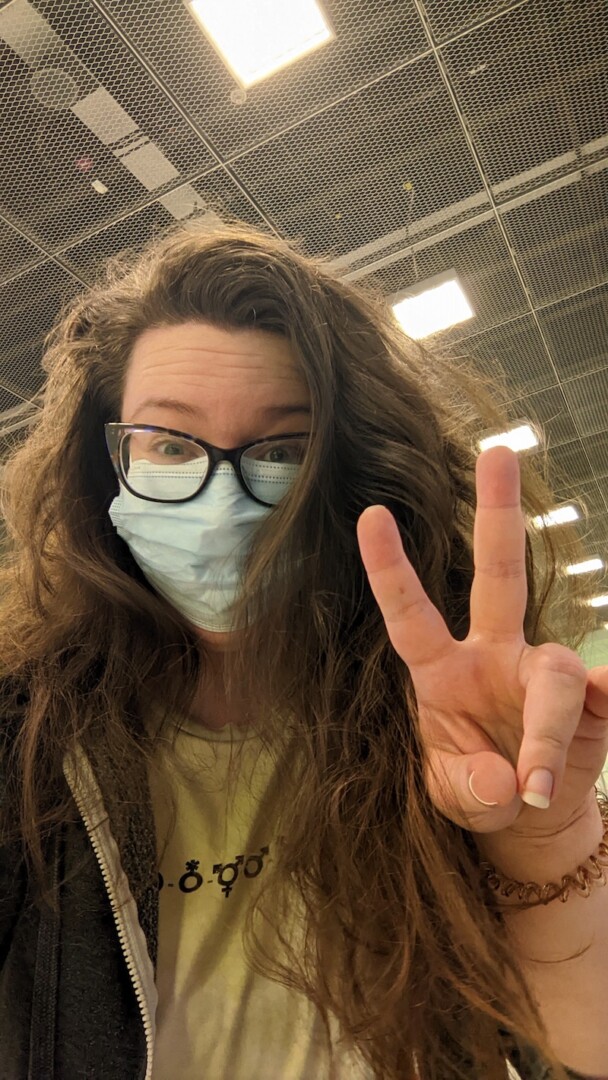
About the Author
Hannah Shewan Stevens is a writer, editor and campaigner. As a disabled, chronically ill queer woman, she specialises in covering the intersection of health, travel, sexuality and LGBTQ+ issues. She is also training to be a sex educator and hopes to use her work to help people confront difficult topics openly and with compassion.
All photos courtesy of the author.
Information published on this website and across our networks can change over time. Stories and recommendations reflect the subjective opinions of our writers. You should consult multiple sources to ensure you have the most current, safe, and correct details for your own research and plans.
Frayed Passport is a participant in the Amazon Associates Program, an affiliate advertising program designed to provide a means for sites to earn advertising fees by advertising and linking to Amazon.com. We also may share links to other affiliates and sponsors in articles across our website.




